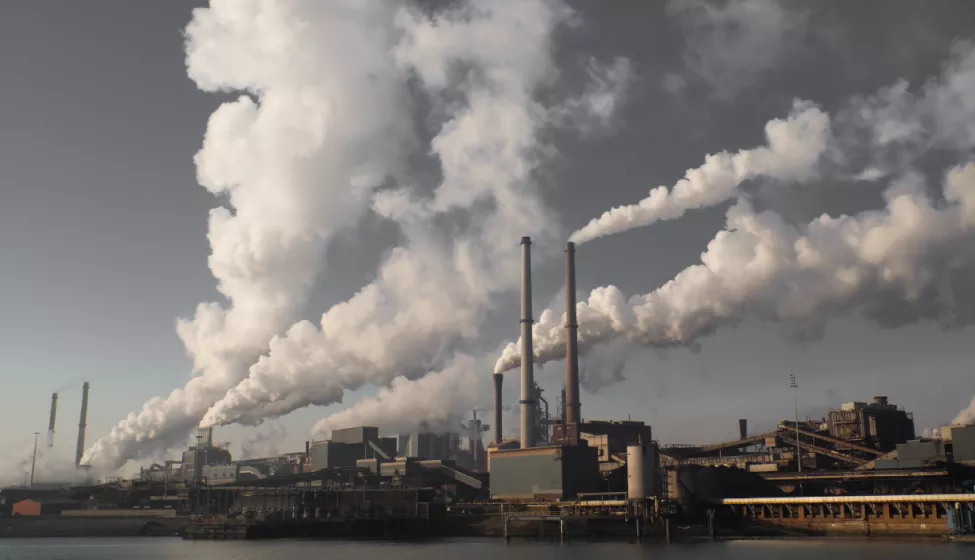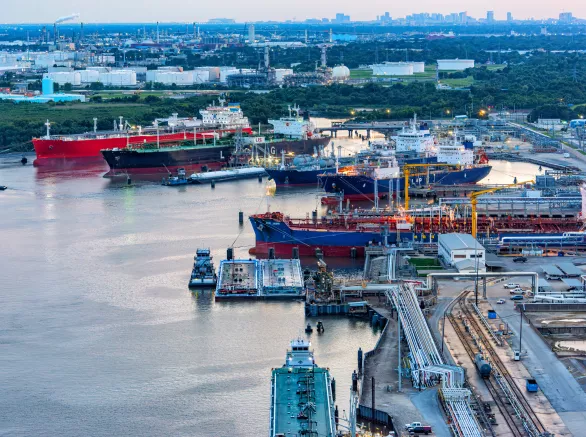September 16, 2021
The Polluters Pay Climate Fund Act & the Huaraz case
The polluter pays principle (PPP) was first recommended by the Organization for Economic Co-operation and Development (OECD) in 1972. Since then, PPP has become established as the basis for numerous laws in the U.S. as well as globally. The PPP has received renewed attention from a number of western democracies and global organizations as a possible funding solution for large-scale climate actions.
In the U.S., the Polluters Pay Climate Fund Act is gaining traction in Congress based on a simple premise embodied in the nation's 30-year-old Superfund environmental pollution program — polluters should pay to help clean up their mess, and those who pollute the most should pay the most. But despite the simplicity of the premise, the scientific challenges associated with applying the PPP to compensate for the economic and social changes imposed by a changing climate are daunting.
Can the PPP be reasonably applied to climate damages and the role of greenhouse gases (GHGs) in causing these damages? What is the quantitative role of various GHGs, and what is the role of naturally occurring events and processes — wildfire emissions, agricultural emissions, methane releases from melting tundra — in the emissions-to-damages calculus?
These and other scientific questions raised by the PPP and the Polluters Pay Climate Fund Act are not just issues for future speculation but matters already under scrutiny in international litigation.
The Huaraz case
The Huaraz case has been called the world's first climate lawsuit.
Mr. Saúl Luciano Lliuya, a Peruvian farmer living in Huaraz, Peru, filed a legal claim in 2015 in a German court against RWE, Germany's largest electricity producer. Mr. Lliuya claimed that the melting of mountain glaciers near his town and the threats to his farm posed by the melting ice were caused by climate change. Climate change was driven by GHGs, and Mr. Lliuya asserted that RWE's activities in Germany contributed substantial volumes of GHGs to the atmosphere and bore some measure of responsibility for the melting of the nearby mountain glaciers and flooding in and around his home in Peru.
Acknowledging that RWE was only a contributor to GHG emissions responsible for climate change, Mr. Lliuya asked the German court to order RWE to reimburse him for a portion of his lost farm income, as well as expected future losses that could be linked to RWE activities. Mr. Lliuya estimated his losses attributable to RWE were 0.47% of his total farm losses, the same percentage as RWE's estimated contribution to global industrial GHG emissions since the beginning of the industrial age.
At present, the legal case has still not been decided in the German court. Significantly, in 2019, the presiding judge ordered a visit to the site to collect environmental data to understand the alleged damages and any contributing factors underlying Mr. Lliuya's losses. That work is delayed, at present, by the COVID-19 global pandemic.
The PPP and attribution science
A relatively new field of research largely applied to climate studies — referred to as attribution science and supported by methods such as probabilistic event attribution (PEA) — has taken on the challenges of determining causal links between climate change and extreme weather events and their frequency, severity, and consequences. PEA applies probabilistic statistical methods to examine data and derive cause-effect conclusions by quantifying the extent to which past GHG emissions, for example, may or may not have contributed to the probability of an extreme weather event.
Although those PEA tools can be modified and used on the more granular set of questions aimed at examining linkages of climate factors to damages of various types, attribution science and PEA have not yet been applied to determining links between climate factors and damages.
Much more research and data are needed to improve the clarity and precision of PEA for causation and calculating the "attributable risk" from industrial sources and human activities to a specific set of damages. Though attribution science provides a useful toolkit, it will not answer all of the questions likely raised in legal and regulatory proceedings, and particularly those striving to link GHG emissions to particular climate-related events and damages.
Technical issues, assumptions & challenges
To apply the PPP to GHGs, beyond a presumed gauntlet of legal issues, many scientific issues need to be navigated. The scientific and technical questions at issue for both regulatory enforcement and litigation cases are numerous and complex.
Are GHGs appropriately identified as "pollutants" and, if so, when were these substances identified in regulation and law as pollutants? At what levels were they considered pollutants? How do governmental regulations and law define the polluter in the context of GHG emissions? To what extent should companies involved at various steps along the supply chain — from extraction to refining, transportation, and distribution — be held accountable for climate-related injuries and damages? And how should regulatory agencies and courts of law define the environmental baseline against which to judge climate-related changes and damages? What are appropriate methodologies for quantifying climate-related damages "but for" the polluter's actions?
Should a PPP framework advance as the foundation in future climate change litigation, science must illuminate in courtrooms and regulatory proceedings how to apply the PPP fairly and equitably. While the PPP may appear sensible, its application to climate change attribution and responsibility is complicated by myriad factors, requiring investigation using the scientific method. This includes the analysis and articulation of uncertainties in any linkages of climate factors to damages, transparent statements of assumptions, and the use, wherever possible, of hypothesis testing and evidence collection in the service of scientific reliability and defensibility.
How Exponent Can Help
Exponent offers strategic, multidisciplinary climate consulting to public and private sector stakeholders seeking to both understand and mitigate the physical and liability risks of climate factors, reduce GHG emissions, and understand risks to supply chains, including water resource issues. Additionally, we assess and advise on the environmental and ecological risks and consequences of climate-related failures and incidents. Our broad expertise across numerous engineering disciplines, public health, ecological and environmental sciences, hydrology, natural resource damage assessment, and restoration and mitigation analysis gives our clients access to an unparalleled wealth of skills and resources that can help build unique solutions to unprecedented challenges.


